Close to Vratsa, to the Danube River, to the heart ...
At the beginning of 2023, 17 wineries united and created a wine map of the Western and Central Danube Plain.
A year and a half later,
the Bulgarian Association of Wine Professionals gathered a group of journalists for a tour of several wineries on the map. So, we celebrated the International Mavrud Day, tasted an excessive amount of fine wines and felt pride and joy in what the winemakers in this part of Bulgaria are doing.
The tour started with an extraordinary man – Todor Kostadinov, in his winery Agrofitness in the village of Borovtsi, near Montana. We still have warm and delicious memories of the Trifon Zarezan Open Days at his place – wine with character, food cooked by the local women, songs and dances flowing from the heart.
Todor is a passionate custodian and researcher of local old vine varieties – Zarchin, Pamid, Garvanovo oko, Gamza, Dimyat and others. A self-taught winemaker, reminiscent of Radichkov's characters. You must try his Pamid Garvanovo oko (Raven's Eye), winner of the Silver medal at the Concours Mondial de Bruxelles 2024 and the Gold medal at this year's Balkan International Wine Festival.
We are heading to Vidin region – to the Novo Selo winery. They started building the winery with volunteer labour in 1939 and finished it in 1946. So, while some were making war, others were making wine. Today they have 720 acres of their own vineyards, of which 450 acres are new. They develop wine tourism and have a large tasting hall for 70 people.
We are tasting Rcatsitelli, from a 60-year-old vineyard, vintage 2021. The variety was once introduced to Bulgaria from Georgia, it has impressive minerality and length of flavour. We are even more impressed by Dunavski Lazur, a 1969 hybrid between Rcatsitelli and Villard Blanc, with a good body and good acidity.
Стигаме до главния герой – гъмзата, за която казват, че е донесена по тези места от римляните преди 2000 г. Има тънка ципа като Пино ноар, по-леко и деликатно тяло, добре изразени киселини. Опитваме реколта 2021 г., обявена за „Най-добра гъмза в България“ Усещането е като да си изял шепа череши.
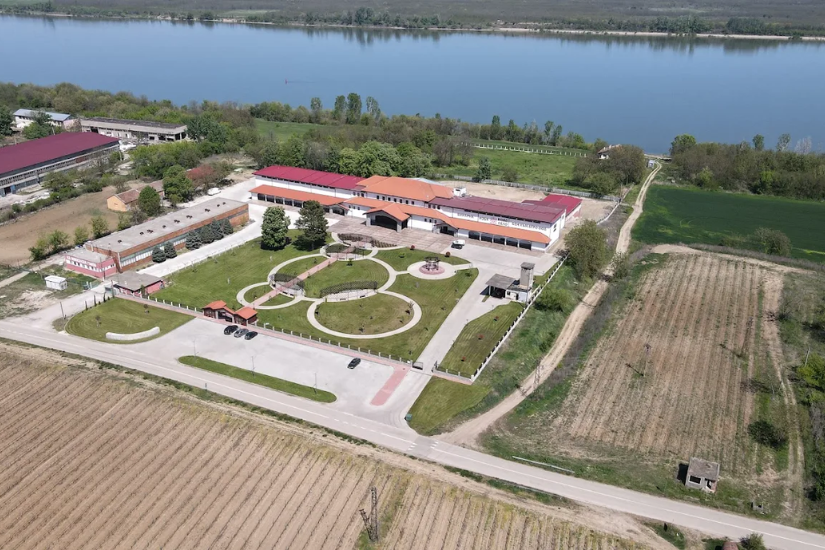
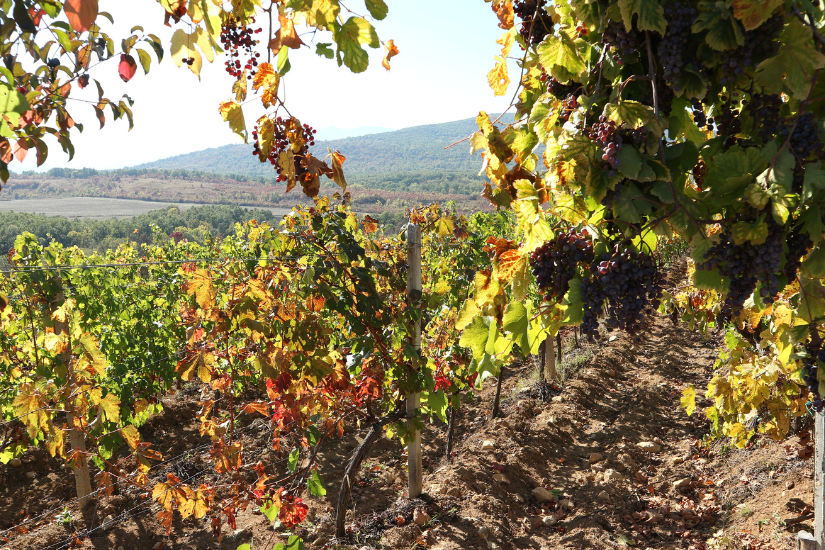
И откриваме потенциала на гъмзата като аперитивно вино, което може да се пие охладено до 15-16 градуса и без храна. Пътят ни зове, а не можем да откъснем уши от разказите на главния технолог Даниел Недялков – работил е в Нова Зеландия и в над 20 изби тук, огромен капацитет, с много знания и с убеждение, че тероарът – това са почвите и климатът, но и човешката ръка зад гроздето и виното.
We follow the curve of Zlatorozhie and head to Bononia, one of the most modern wineries in Southeast Europe. The building was erected by two Austrian brothers in 1895 and was one of the first breweries in the Balkans. Today there are impressive 1600 decares of well-kept vineyards, with nearly 20 varieties, and the chief winemaker is one of the most famous names in the industry – Stefan Pirev. We learn from him that they work only with French oak, and their pride is the fermenters made to their design – not only aesthetic but also technological.
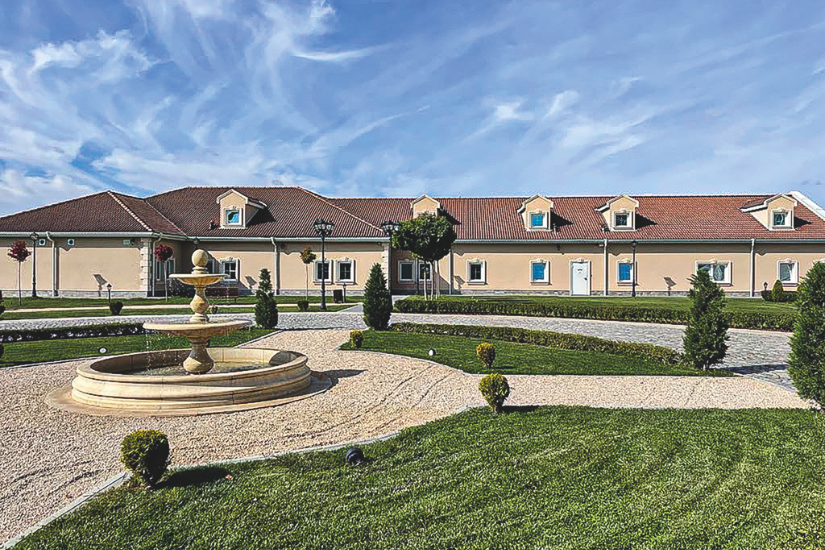
Опитваме Димят – елегантно вино с добър плодов аромат: цитрус, ябълка, мед. Врачанският им мискет е плътно вино с добра интензивност и специфичен аромат – карамфил, зюмбюл, роза. Според Пирев това е българският винен сорт с най-голям потенциал. Наслаждаваме се на това изключително вино и по време на обяда в ресторанта на комплекса, където кухнята е изискана и вкусна.
Сомът е приготвен виртуозно, както и десертите, домашното хлебче с пармезан и чушка е от нещата, които не можеш да спреш да ядеш. След обяда ни се иска да отморим в една от 22-те разкошни стаи на хотела, всяка с различен интериор, но е време за дълъг преход – до изба Типченица.
Пристигаме по тъмно, но собственикът Велин Джиджев и технологът Надя Минева (още популярни винени имена) ни очакват. От тях научаваме, че преди години (по-скоро десетилетия) селото е било център за производство на посадъчен материал – правели 8 млн. пръчки годишно. Сегашните собственици също започват бизнеса първо с посадъчен материал, а от 2018 г. правят вино и туризъм.
They rebuilt the old building of the Agricultural Cooperative, which was almost completely destroyed. Their vineyards are 600 m above sea level and they make 56,000 bottles a year. They work only by hand and Nadia takes care of the whole process – from the vineyard to the winery. She has the freedom to create and turn small batches into works of art.
Дегустираме Врачански мискет и Рубин – двата емблематични сорта на изба „Типченица“. Врачански мискет barrel, оранжево вино от Врачански мискет и Рубин Oak, отлежало 2 г. в дъбова бъчва и 2 г. в бутилка. Наслаждаваме се на характерната за избата свежест на вината – дори и на отлежалите. Изкушението да останем в една от петте стаи за гости е голямо, но ни чакат за вечеря в ресторанта на хотел „Ариел“ в Мездра. Ресторантът ни посреща с елегантност и простор и с гостоприемството на семейство Йорданови – собственици на хотел „Ариел“ и на винарска изба „ШаТони“.

Представят ни вината си в съчетание с вкусна вечеря: опитваме Верментино със салата (научаваме, че зеленчуците в нея са от собствената им оранжерия „Озирис“ – Мездра), розе от Каберне фран с палачинка с пилешко, Merlot Barrel 2021 с телешко с манатарки и пухкавата домашна питка на Надежда Йорданова. А за десерт – божествена морковена торта с рачел и с малини, сервирана с Врачански мискет.
The pleasure is complete, the conversation intimate. The entrepreneur Toni Yordanov tells us the story – In the year 2000, he went to Petrovo village near the Greek border on business, discovered the wine of Melnik and decided to make a cellar. He built a modern and cozy complex near Mezdra – with 13 rooms and 3 apartments, a restaurant, tasting halls, and event rooms. And all these with fabulous views of the Vratsa Balkan! And the taste of Melnik can be found in the incredible rosé from Broad-leaved Melnik vine produced by ShaToni.
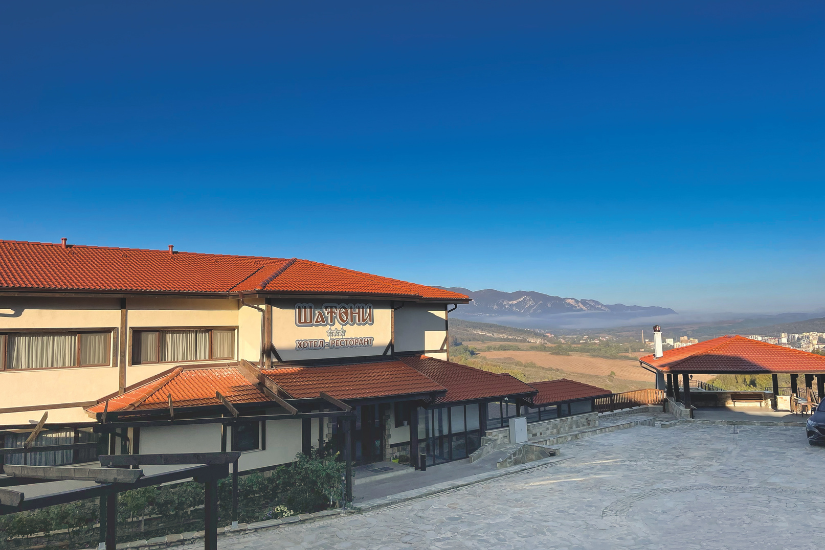
The last day of the tour takes us along the Danube. The beginning is in the cellar of Achinora. In 2018, Antoaneta Genova graduated in oenology in Bordeaux and her family entrusted her with viticulture and winemaking. They grow a total of 80 decares of Vrachanski Misket and Kailashki Misket, Storgosia and Cabernet Sauvignon. In 2020 Tony made the first 600 bottles of Vrachanski Misket.
Today, the annual production is already 10,000 bottles, and the young lady knows the vineyard and what to expect. She follows the rhythm of nature and lets her intuition guide her. We compare Vrachanski Misket and Kailashki Misket 2022. Kailashki is wilder, while Vrachanski – more elegant and airy.
The Kailashki misket variety was made in 1976 from Villar Blanc and Hamburg Misket (table grapes), while the Vrachanski Misket is a naturally existing variety (according to some – a Hungarian variety, a cross between a Moldavian variety and a small-grape Muscat).
Achinora is the name of the first wife of Khan Asparuh and means ‘smelling like violets’ – the characteristic aroma of Vrachanski Misket, which gave birth to the popular Vrachanska Temenuga (there is a cellar with the same name, near Vratsa, with excellent wines and brandies).
We're also trying the Equinox series from 2021, with grapes picked 21-23 September – it is said that this brings prosperity. Yeast and clarifier free series, unfiltered, with low sulphites.
A real explosion of flavours. We understand why natural wines are so trendy lately. We finish with a semi-sweet 2023 Kailashki Misket, made from raisin grapes at the end of the vintage.
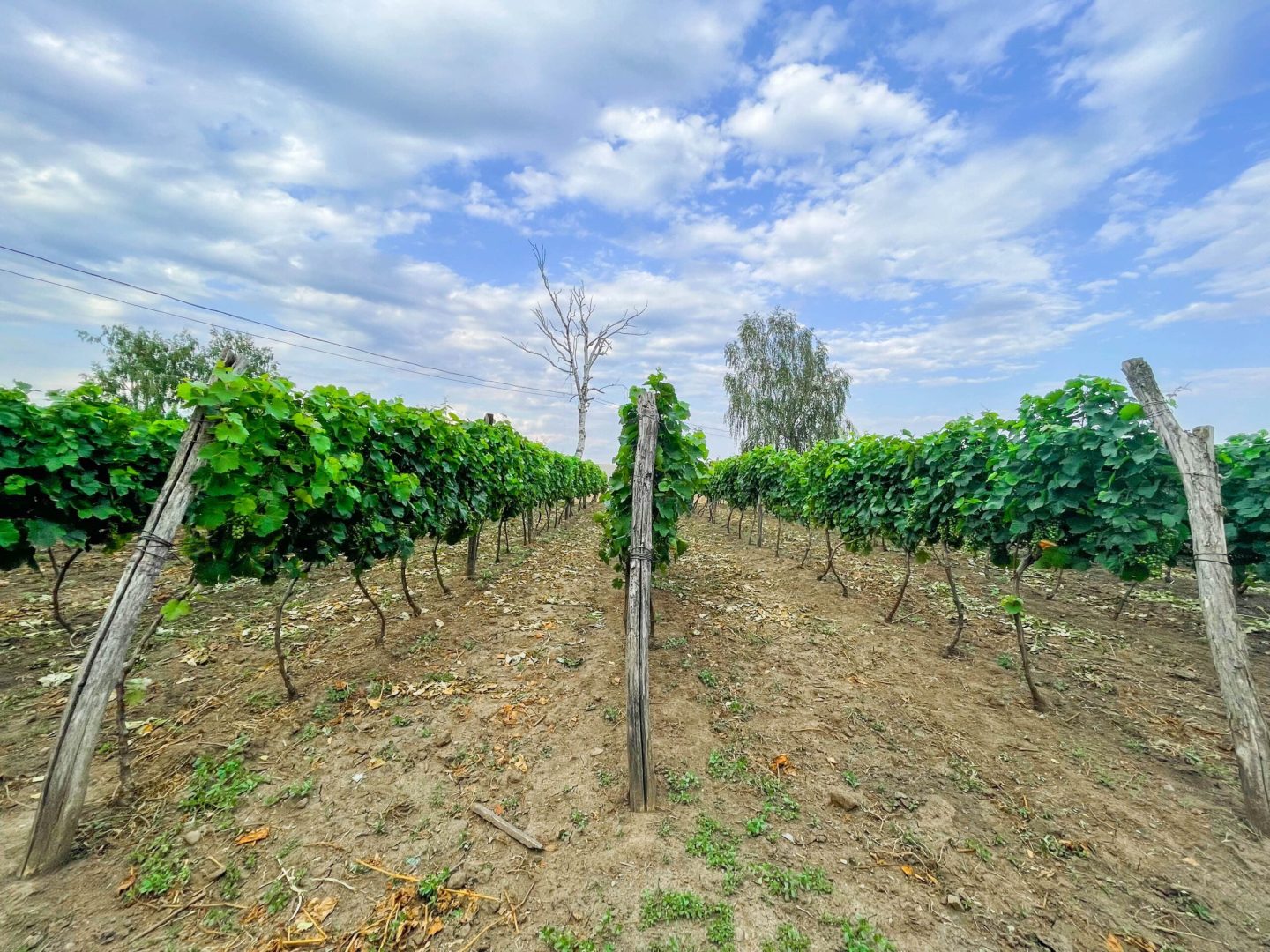
And we head to Oryahovo and Château Bourgozone. The Danube River meanders past a bank of vineyards, and the opposite is the island of Esperanto, with its fine sandy beach. Bourgozone is an example of successful strategy and realization. The winery is family-run – the parents take care of the vineyard and wine-making, and the two sisters are brand ambassadors. They grow 100 hectares of vineyards with 13 varieties, two of which are Bulgarian – Tamyanka and Gamza. Grapes are picked only by hand.
Due to the specificity of the terroir, their wines suit Western tastes and 60% of their wine is exported to nearly 20 countries. Since 2010, they have been exporting to the same customers – including two Michelin-starred restaurants in Belgium. They don't use much oak, make fresh, fruity and fine wines, and have a vegan wine certificate.
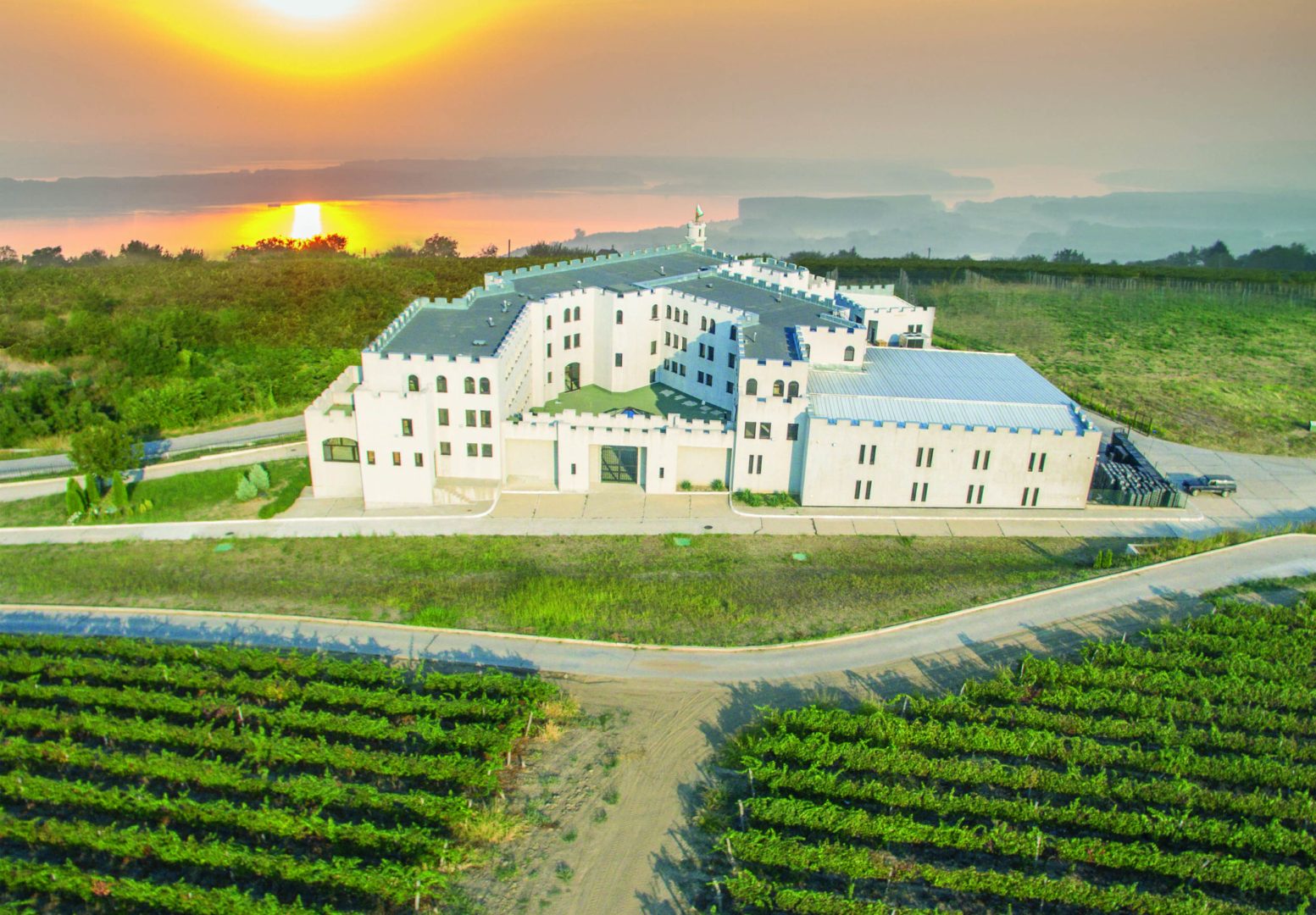
The tasting, which we do in the Belle Vue pavilion, located on a hill among the vineyards, is extremely professional – with exquisite pairing and the exciting narration of Emi Marinova. We start with Viognier, their most popular export wine.
We try extremely fresh Tamyanka and Chardonnay fermented in barrique – a more masculine wine, great with Christmas cookies and with foie gras. Bourgozone's Chardonnay is the only Bulgarian wine ever to receive 91 points from Wine Enthusiast.
Their Gamza lives up to its name – the word comes from Persian and means a sensitive, shy woman. Lighter, with lower tannins, they call it the Pinot Noir of Eastern Europe.
We're also trying Bourgozone's original Pinot Noir, which is served in the VIP lounge at JFKennedy Airport. And off we go to the last stop – Haralambievi winery. Dimitar Haralambiev studied viticulture in Germany and applies modern and environmentally friendly methods in growing grapes – grass between the rows, maximum green mass, no spraying, no fertilizing.
Their winery is located in the village of Petarnitsa near Pleven and relies on modern stylistics of the wines – clean and airy. We are tasting the 2023 vintage Solaris – another bold and very successful attempt of the winery to show how a German variety – a cross between Riesling, Pinot Gris and Muscat, would look in Bulgaria. We feel a huge bouquet of citrus – from lime to sweet orange.
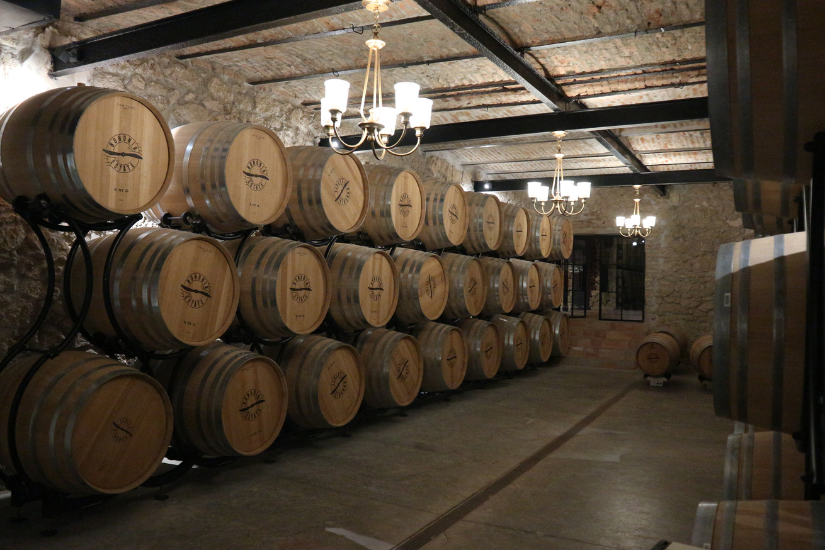
Ruby 2021 also impresses us – with powerful tannins, which, however, quickly round off. The thing they are rightly proud of is Cabernet Franc – the 2020 vintage has a whole bunch of awards. For opulence, we try an amazing wine straight from the barrel – Dornfelder and Cabernet Franc,
vintage 2021, comparable to the best Amarone. To finish off this exciting wine journey, we drink a glass of Gewürztraminer with quince and a tincture of 18 herbs – all the flavour and charm of the region combined in one glass.
- Prolet Yordanova
КАРЕ
Zlatorozhie – where the Danube makes a bend and flows from north to south. Soil – good drainage and moisture retention, sand, limestone, clay, silt and carbonate black soil.
The Danube region, as soils and temperatures, is good for white wines. The big temperature amplitudes help to accumulate sugars.



